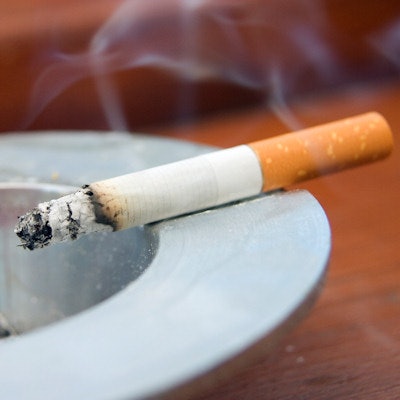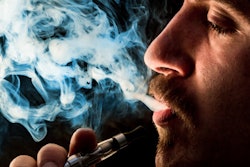
If you're a smoker and want to cut your chances of dying from cancer by smoking a "light" brand of cigarette, think again. Researchers found no difference in lung cancer mortality between those who smoked light cigarettes and those who puffed regular smokes, according to a study published on October 21 in JAMA Internal Medicine.
In a secondary analysis of data from the National Lung Screening Trial (NLST), researchers found that smoking light or ultralight cigarettes conferred no statistically significant mortality benefit over regular cigarettes. On the other hand, those who smoked unfiltered cigarettes had much higher lung cancer incidence rate and mortality rates compared with smokers of filtered cigarettes.
In a research letter to the journal, a group led by Dr. Nichole Tanner of the Ralph H. Johnson Veterans Affairs Hospital in Charleston, SC, noted that tobacco manufacturers introduced filtered and "lower-tar" cigarettes in response to revelations in the 1950s that smoking was a major cause of lung cancer. The group decided to investigate the effectiveness of such products by looking at data from NLST, a large randomized controlled trial that demonstrated that CT lung cancer screening could reduce mortality 20% in high-risk smokers.
Tanner et al examined data from 14,123 participants in NLST, looking at baseline tar level of cigarettes (regular, light, or ultralight) and whether the cigarettes were filtered or unfiltered. They then matched this information with outcomes data like lung cancer diagnosis, mortality, and all-cause mortality.
Their analysis found that smoking light or ultralight cigarettes did little to reduce risk: These individuals had a hazard ratio of 0.91 for lung cancer mortality compared with smokers of regular cigarettes, but the difference was not statistically significant (p = 0.46). Smoking a menthol brand also didn't help (p = 0.84).
But the 11.4% of participants in the study population who smoked unfiltered cigarettes were living dangerously: With a hazard ratio of 1.96, they had nearly twice the risk of mortality compared with those who smoked filtered brands (p < 0.001). Their all-cause mortality was also higher, at a hazard ratio of 1.28 (p = 0.003), and their lung cancer incidence hazard ratio was 1.37 (p = 0.005).
Tanner et al pointed out that the study results indicated that it was important to find individuals who smoked unfiltered cigarettes because they would benefit most from aggressive tobacco treatment. But smoking remains deadly, even with filtered cigarettes: Lung cancer mortality in those who smoked filtered cigarettes was 1,600 lung cancer deaths per 100,000 individuals, compared with 34 deaths per 100,000 in those who never smoked.
"Evidence suggests that despite adoption of new cigarette designs, cigarette smoking continues to pose enormous health risk," the authors concluded.




















